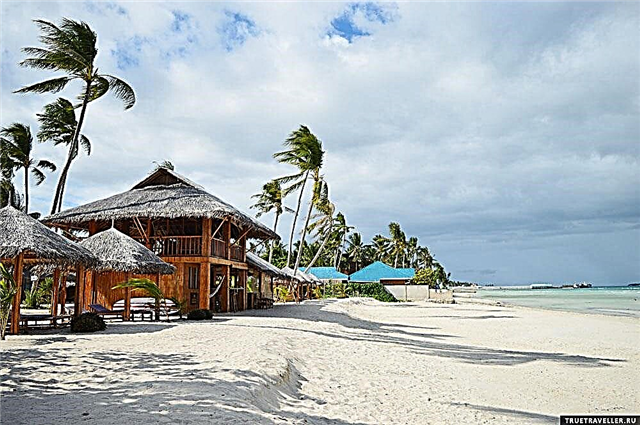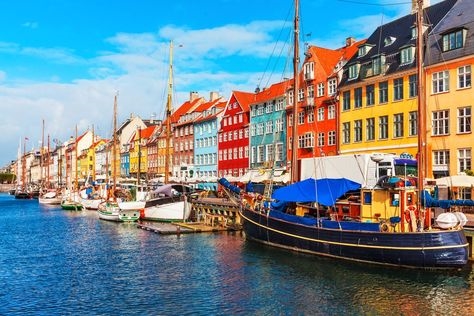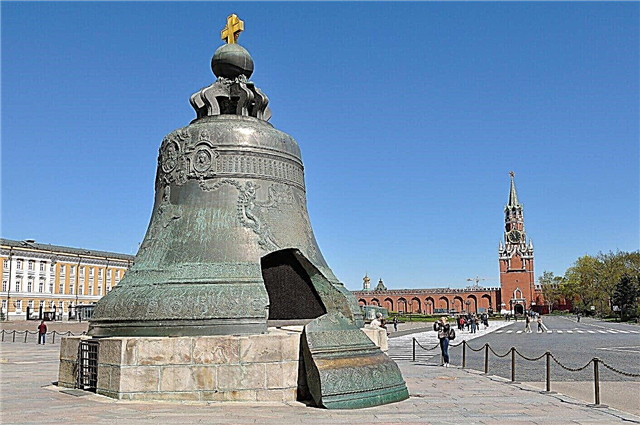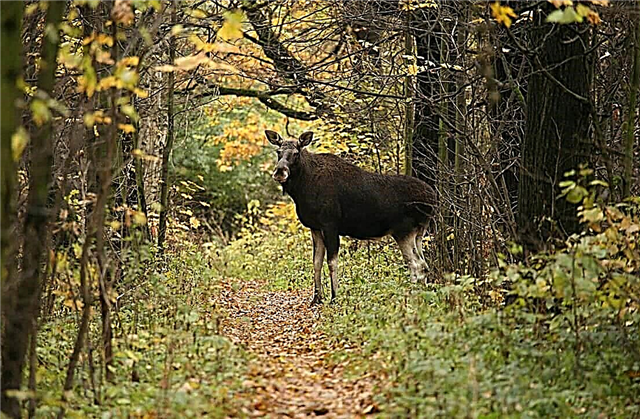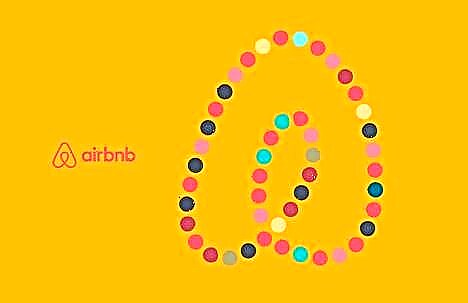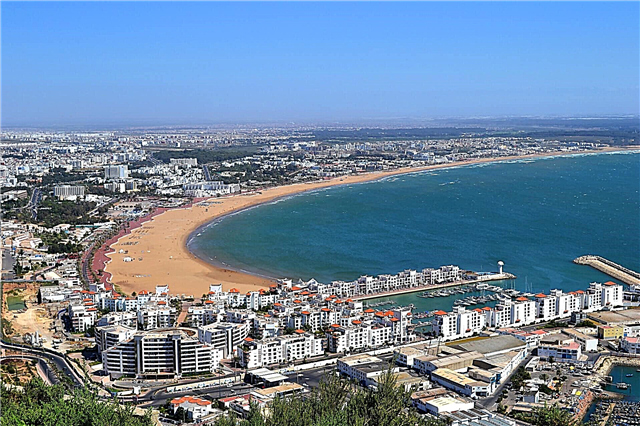Moroccan cities show steady population growth from year to year. The capital is not the largest in number in the country, which is already a difference. However, there is a caveat: Rabat is separated from the city of Sale by a river and connected by a bridge. Together they are part of the metropolitan area, where 2.5 million people live. Europeans travel to Morocco for exotics ranging from architecture and landscapes to food, carpets and artisan products.
The legacy of the colonists mixed with the traditional Islamic style, so every city has enough architectural and natural beauties, as well as cultural monuments. For example, Meknes is fully included in the UNESCO World Heritage List, Tangier boasts one of the longest beaches in the world, and Oujda has an unusual Medina by the standards of the country.
The largest cities in Morocco
List of the largest cities in terms of population in the country.
Casablanca
One of the main trading cities in North Africa. The distance to the capital is 40 kilometers. Roads diverge from United Nations Square to various landmark sites in Casablanca. Among them are the tallest minaret in the world at the Hassan II mosque, the El Khank lighthouse, the Mahkama du Pasha palace, the second largest shopping center on the continent. The resort areas of Ain-Diab offer vacationers hotels, beaches, bars.
Population - 3 359 818 people (2014).

Fez
The oldest of the imperial cities of Morocco. The main center for Islamic culture and education in North Africa. Fez is divided into 3 parts. The old walled medina is one of the largest pedestrian zones in the world and is a UNESCO World Heritage Site. Another quarter was founded by the Marinids in the XIII century, there are many monuments of their culture. New Fez was founded at the beginning of the last century by the French.
Population - 1 112 072 people (2014).

Tangier
Stands on the shore of the Strait of Gibraltar. The grottoes of Hercules, located in caves in the area of Cape Spartel, are the main attraction of the area. Other landmark sites: Kasbah Oudaya, Bit el Mal Treasury, Museum of Contemporary Moroccan Art, Mendubia Gardens. The nature of Tangier is reminiscent of the French Riviera. Golden sand covers one of the world's longest beach pilaf with a length of 47 kilometers.
Population - 947 952 people (2014).

Marrakesh
Stretches at the foot of the Atlas Mountains. One of the four imperial cities in the country. In the center of Marrakech is the Bahia Palace. The Dar Si Said Museum invites you to view the collection of Moroccan art. Walking through the narrow streets, it is easy to find the way to the artificial lake Menara and the gardens of Agdal. Traditional Berber settlements have been preserved in the vicinity.
Population - 928 850 people (2014).

Salé
The city is located on the shores of the Atlantic Ocean. The second most important religious center in Morocco after Fez. Along with Rabat, it forms a metropolitan agglomeration. There are many museums in the city, the most famous of which are the Ethnographic Museum and the Museum of Ceramics. The city is connected with Rabat by a modern tram network.
Population - 890 403 people (2014)

Meknes
This city is called "Moroccan Versailles" Included in the UNESCO World Heritage List. Part of Meknes is surrounded by a stone wall with the Bab Mansour gate - the most beautiful in Morocco. Because of their crenellated towers, the gate from a distance resembles a medieval castle. Significant objects: the Great Mosque, the Bu-Inanya madrasah, the mausoleum of Mulla Ismail. At the end of summer, an equestrian festival is held in the suburbs.
Population - 632,079 people (2014).

Rabat
Capital of Morocco. Together with the city of Sale, it forms a metropolitan agglomeration. Rabat is surrounded by greenery: parks, squares and gardens are found everywhere. The Kasbah Udaya fortress is built on the rocks - the oldest part of the city. The port is mainly used for tourist purposes. Local fishermen can prepare their catch right by the water. The best souvenirs are hardware, carpets and fabrics.
Population - 577 827 people (2014).

Oujda
Located near the border with Algeria. Medina Ujda differs from typical Moroccan ones: its streets are wide, and the buildings are not so dense. There are many fountains and bazaars in the city. The old water market, or Souk El-Ma, has also survived, which is now not so relevant. An ethnographic museum is placed behind the fortress walls, where thousands of traditional items from the everyday life of the inhabitants of the region are kept.
Population - 494 252 people (2014).

Kenithra
Based on the Sibu River, 40 kilometers from the capital. There is a national park near Kenitra. The river port built in 200 has partially survived. A beach holiday is developed, in the vicinity you can go surfing, rent a boat, arrange a horse ride. Modern shopping centers coexist with small street markets selling spices, dried fruits and artisan products.
Population - 431,282 people (2014).

Agadir
City of the Atlantic coast, rebuilt in the 60s of the last century. The main occupations of the population are fishing, growing vegetables and fruits, and working in the service sector. Tourists are offered to go out to sea under sail, take a ride on a camel or horse, learn surfing or rent any floating craft. Nightlife is in full swing at large hotels.
Population - 421 844 people (2014).

Tetuan
Large port on the Mediterranean coast. The city has mixed objects of architecture from different eras, cultures and styles. Adjacent to the Spanish Quarter, the old medina, a UNESCO World Heritage Site, and modern Moroccan buildings. The streets of Tetouan are increasingly reminiscent of Europe. Most visited museums: Moroccan art and archaeological.
Population - 380 787 people (2014).

Temara
Located on the shores of the Atlantic Ocean. An ancient city with preserved walls and mosques. Located near Rabat. The city has beaches and a small port for pleasure boats. The beaches of Temara are very popular among residents of the capital and foreigners. The coastal caves El Harura 2 and El Mnasra (formerly known as the smugglers' cave) can also be seen here. The caves are archaeological sites dating back 120,000 years.
Population - 313 510 people (2014)

Safi
Located on the Atlantic coast. The largest fishing port in Morocco was built here. Sightseeing: Great Mosque, Portuguese fortress and chapel, underground chapel in the Gothic style, main street with its shops and cafes, pottery quarter. The Kechla fortress in the past was a prison, and now it houses a museum of ceramics. Conditions for a beach holiday have been created.
Population - 308 508 people (2014).

Mohammedia
A port city half an hour by car to Casablanca. The city is famous for a large number of leisure and entertainment options: golf, tennis, casinos, hippodrome. The extensive beach area is equipped with everything you need for a resort holiday, and is also partially built up with pitchforks and apartments. For its climate and region, Mahammedia is quite green. In the mid-2000s, he hosted a flower festival.
Population - 208 612 people (2014).

Khuribga
The city owes its development to the discovery of phosphate deposits in the vicinity in 1921. Khouribga has preserved many houses built in the style of French colonial architecture. The province has 3 industrial zones and agriculture is dominated by animal husbandry. Tourists can buy products from 9 artisan associations, available all year round.
Population - 196 196 people (2014).

El Jadida
Port city on the Atlantic coast. In 2010, the Mazagan Resort opened here with a casino and golf courses. Hotels and villas have been built on the beaches, which receive guests during the summer season. In the immediate vicinity there is a promenade leading to an oyster farm. El Jadida has a landmark listed as a UNESCO World Heritage Site - a Portuguese fortress.
Population - 194 934 people (2014).

Beni Mellal
It is located at the foot of Mount Tassemite. The Middle Atlas ridge "covers" the city, so the climate is continental. The region grows olives, oranges, figs, which are exported to other countries. The main tourist attraction is the citadel. The construction of massive walls took place at the end of the 17th century. The rest of Beni Mellal looks modern.
Population - 192 676 people (2014).

Ait-Mellul
It is located 20 km southeast of Agadir, on the southern bank of the Sousse River. The climate in Ait-Mellul is mostly hot and dry, and it rarely rains. Nothing is known about its early history. This is a modern city with mainly three-storey residential buildings, on the ground floors of which there are garages, shops or warehouses. Its straight streets have no historical or cultural attractions.
Population - 171 847 people (2014).

Nador
Separated from the Mediterranean by a lagoon. Migratory routes of birds pass here. Nador's economy is based on trade, agriculture and fisheries. The influx of visitors rises sharply in the summer months: both foreigners and Moroccans who live in Europe the rest of the year. More and more new full-fledged resorts with golf courses, shopping malls, marinas are being built.
Population - 161 726 people (2014).

Pelvis
The "old" city has been known since the 8th century. Its buildings are surrounded by fortifications. The "new" city was founded by French colonists in 1920. Handicrafts and some handicraft directions are developed in Taz. Here you can buy carpets, leather and wood products. The most notable architectural sites are the minarets of Andalu and Sidi Azzuz and the Great Mosque, dating from 1294.
Population - 148 456 people (2014).

Settat
The city is located on a plateau, surrounded on all sides by foothills. Geographically located between Rabat and Marrakech. An ancient city with preserved historical sights. The most famous are the Ismail fortress, located in the center of the city, and the statue of a horse on a pedestal.
Population - 142 250 people (2014).

Berreshid
An industrial city founded during the French colonization of Morocco. In this regard, the architecture of the city combines traditional Moroccan and European styles. Here you can find French quarters, with their tanhauses and churches. More than 100 factory enterprises are concentrated in the city. Some of them produce cars, clothing, furniture, carbonated drinks, etc.
Population - 136 634 people (2014).

Hemisset
Founded by French colonists in 1920. It is the capital of the province of the same name. The city has a stadium with a capacity of 10 thousand people. An artificial turf was laid on his field in 2011. Hemisset is bilingual: the Middle Atlas Tamazight dialect is added to the traditional Arabic in the country. The economy is based on trade and agriculture. Carpets are taken away from here as souvenirs.
Population - 131,542 people (2014).

El Araish
Stands on the Atlantic coast. Conventionally, El-Araish is divided into “old”, or Muslim, city and new, or “colonial”. The layout of the first part is typically Moorish, the second is Andalusian. The city quarters have preserved monuments of culture, history and architecture of different periods, including Roman ruins, a castle of storks, and a music conservatory.
Population - 125,008 people (2014).

Gulimin
It is called the "port" of the desert. Several serpentine roads lead to Gulimin. There are oases in the area. One of the largest camel markets in the region operates in the city. Typical of Moroccan architecture, residents often prefer bright colors in their clothes. Tourists are greeted by a mountain with an inscription in Arabic on it: "God, Motherland, King, Gulimin Province, Gateway to the Sahara."
Population - 117 988 people (2014).


